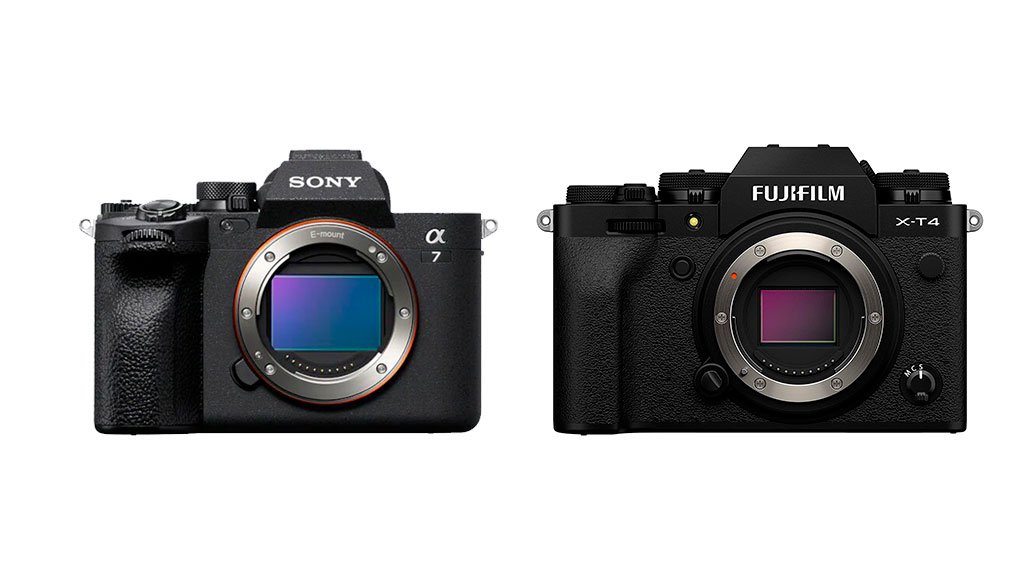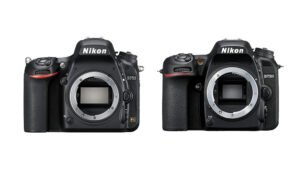Both mirrorless cameras, with professional quality within everyone’s reach, with 4K resolution, which you can use both in photography and video, capable of capturing any moment with high quality. The Fujifilm X-T4 and Sony a7 IV two enthusiastic cameras that were officially presented in February 2020 and October 2021, wonderful cameras capable of enchanting with their different functions. Both the xT4 and the a7iv are mirrorless interchangeable lens, with APS-C sensor as is the Fujifilm, while the Sony has a full frame sensor.
Sony a7 IV vs Fujifilm X-T4 Specifications
As always we will compare, the Sony a7 IV against the Fujifilm X-T4. In this case we will comment on the key sections.
Sony a7 iv | Fujifilm x-t4 | |
SENSOR | Exmor R CMOS, full frame 35 mm (35.9 x 23.9 mm) | X-Trans CMOS 4 APS-C (23.5 × 15.6 mm) with primary color filter 26.1 MP |
PROCESSOR | BIONZ XR | X Processor 4 |
FOCUS (AF) | Full frame 33 mm: 759 points | Manual F3.5 Fuji X 14 mm |
VIEWER | Electronic 1.3 cm | 0.5″ OLED electronic, 3.69K dots, 0.75x magnification, and approx. 100% coverage |
DISPLAY | 1.04 Mpx touch-sensitive tilting TFT | 3-inch TFT LCD (1,620,000 dots) with 100% coverage |
ISO | 100 to 51,200 in photo (expanded from 50-102,400) 100 to 102,400 video | ISO 160 – 12.800 (80 – 51.200 extended) |
SHOTS PER SECOND | 10 with AF/AE tracking | Burst up to 30 fps with electronic shutter/ 15 fps with mechanical shutter |
MAXIMUM RAPIDITY | 10 fps maximum | 30fps |
DYNAMIC RANGE | EV-4 to EV20 (equivalent to ISO 100 with an F2.0 lens attached) | HDR continuous dynamic range |
VIDEO RESOLUTION | 4K 60p/30p
| 4K 3840×2160 59.94p up to 400 Mbps and Full HD 1920×1080 up to 240p 200 Mbps
|
CONNECTIVITY | USB 3.1, Wi-Fi, Bluetooth 4.1 and NFC
| Wifi, bluetooth, USB-C, HDMI |
BATTERY | Rechargeable NP-FZ100
| Approx. 500 shots with the new NP-W 235 battery included
|
MONTURA | Type E | X Mount |
WEIGHT | Approx 658 g (with battery) | 607 g |
Features
We are talking about two different camera models, Sony a7iv was introduced to the market in months of differences, therefore it is not expected to see a big technological difference between these, although there is still an advantage in Sony a7iv because of its sensor technology. Weight is another important factor, especially when deciding on a camera to carry with you all day, Fujifilm xT4 is lighter than the Sony a7iv, although it does not make this a very significant difference, bearing in mind that body weight is not the only deciding factor when comparing two camera bodies, as you have to take into account the lenses you will be using, given that the Sony a7iv has a full frame sensor and Fujifilm xT4 has a smaller APS-C sensor. Sony has a 33.0MP Full Frame BSI-CMOS sensor and features a Bionz XR processor, while Fujifilm has a 26.0MP APS-C X-Trans CMOS 4 sensor. We would also highlight that Sony a7iv has an advantage in terms of lenses, as there are 174 lenses for the Sony E mount, in contrast for the Fujifilm xT4 there are only 72 Fujifilm X lens lenses. Another important factor is image availability, both cameras have sensor-based image stabilization, which means that all lenses are stabilized on these bodies. While in terms of continuous shooting Sony is capable of 10 fps and Fujifilm xT4 has more 15 fps shooting, both have a very good speed and very good image quality.
Sensor
Sony a7iv has a 33 MP Full Frame BSI-CMOS sensor and features a Bionz XR processor, while on the other hand, the Fujifilm xT4 has a 26 MP APS-C X-Trans CMOS 4 sensor. The Sony sensor provides 7 Mp more than the Fujifilm xT4 sensor, which gives it a significant advantage, it is able to print larger images or crop them more freely, keeping in mind that the maximum resolution of the sensor is not the only determinant of resolving power, factors such as optical elements, pixel size and sensor technology also affect the final resolution of the captured image. Another difference between these two cameras is that it is worth mentioning the Fujifilm xT4 sensor does not have an anti-aliasing filter (Low-Pass), the removal of anti-aliasing filter that increases sharpness and level of detail.
Body
We talk about their body, their front viewing area (width x height) of the cameras is taken as an aggregate measure of their size, the Fujifilm xT4 and the Sony a7iv are of equal size, however, the A7iv e markedly heavier than the Fujifilm xT4, in this context, it is worth noting that both cameras are splash and dust proof, therefore can be used in adverse weather conditions. The above size and weight comparisons are to some extent incomplete, as they do not consider interchangeable lenses required by both cameras. A larger image sensor will tend to go along with larger and heavier lenses, although there are exceptions, which can compare the optics available for the two cameras. Mirrorless cameras, such as these two, have the added advantage of having a short flange to focal plane distance, making it possible to mount many lenses from other camera systems by adapters.
Approach
These two cameras use a hybrid phase detection and contrast detection focusing system. These hybrid systems include specialized photosensitive cells within the image sensor itself that act as a phase detector. The detection process is divided into two steps, first, phase detection allows to quickly get an approximate focus distance, and from that distance the contrast detection system makes a fine adjustment to find the maximum possible sharpness and contrast of that scene area. Most cameras include recognition algorithms, and predictive algorithms for tracking moving objects. Both Sony a7iv and Fujifilm XT4 have the face detection function.
Battery
In terms of battery life, the Fujifilm xT4 is capable of 500 shots on its NP-W235 battery, while the Sony a7iv can take 580 images on a single charge of its NP-FZ100 battery. both are charged via USB, which is a plus when traveling.
Opinion
As for the Sony a7iv it has better image quality and a better value than the Fujifilm xT4, although on the other hand the Fujifilm is more portable and has more features than the Sony. If image quality, which in this case is the main reason for buying a camera and is more important than other features, Sony a7iv is the ideal value for money.







